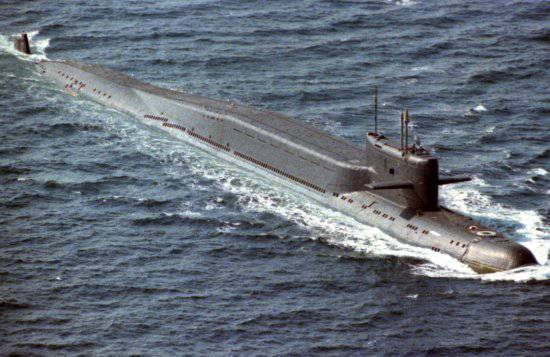Bulava proves that Russian defense industry is more alive than dead
After it, from the nuclear submarine of the 667BDR project from the depth of the Sea of Okhotsk, went to the Chizha test site on the Kanin Nos Peninsula, another P-29P (RSM-50) maritime strategic missile (SS-N-18 Stingray), with separate head units of individual guidance. And soon towards Skatu from the nuclear submarine cruiser of the 667BDRM project, but from under the White Sea water to the Kura polygon of the Kamchatka Peninsula, another strategic missile was launched - the P-29HRMU2 "Sineva", or SS-N-23 Skiff, also capable of carrying separable warheads of individual targeting. And this “rocket firework” ended with a Friday test launch from the Dmitry Donskoy submarine, also from the White Sea and also on the Kamchatka Peninsula, 14, according to the Bulava, P-30 or SS-N-30 account.
All launches are recognized as successful. And if no one expected a different result from the first three rockets, the hit of the head parts of the long-suffering Bulava to the target, the second success this year with seven failures in past trials, can be considered symbolic. And although even two swallows do not make spring, if you change the popular saying, there will be another launch this year from the board of the “native” cruiser Yury Dolgoruky for the P-30, and next year, according to Deputy Prime Minister Sergei Ivanov, even 5 – 6 launches, before it is adopted, the latest test results of the Bulava still require certain insights and conclusions.
The first one. It is that the construction of the “Bulava”, no matter who says anything about it, turned out to be quite acceptable. And the team of the Moscow Institute of Thermal Engineering (MIT), together with its General Designer Yuri Solomonov, who at the end of the last century was entrusted by the government to develop it, coped with the task. 50% more or less successful launches of the fourteen carried out prove this. If half of the missiles hit the target, then everything is fine with the design. If the other half has not flown, and each time for different reasons, the design has nothing to do with it. All the same, MIT managed to solve all its problems, no matter what - for the technology lost in the years of the collapse of the domestic UIC, the lack of necessary materials (including bleached pulp, which was produced, and then ceased to produce the Baikal pulp and paper mill Tver chemical plant and other composites) and a sharp decline in the quality of work at enterprises supplying components of the third, fourth and fifth levels ...
And the second, which is important. History with Bulava, she demonstrated the complete failure of the reform of the service of military representatives, started in the Ministry of Defense two years ago. Attempts to reduce it almost to zero. It turned out that even our domestic highly qualified specialists - assemblers, installers and tuners of such high-tech products as strategic missiles - cannot work without meticulously corrosive and principled control from military acceptance. And at all stages, at the entrance and exit of products. And only after control over the actions of the rocket collectors at each stage of the work became total (they say, even video cameras were hung over each workplace, which took the entire assembly process step by step, and then military security officers carefully analyzed it), the marriage and hack work began to retreat slightly.
True, there must be a reservation. As we see, they retreated during the production of the last two or three rockets, to which increased attention was shown. How the series will go, and for each 955 / 955А and 955 submarine cruisers of the Borey class 12, 16, 20 missiles will be needed, it will be possible to judge only after a few years and a certain number of test and combat launches.
Nevertheless, today, after the launch of the 14, a cautious preliminary conclusion can be made - the “Mace” has taken place. Of course, we still hear a lot of criticism of her. Those people and their “fans” who lost the competition for equipping nuclear-powered submarines of the new generation with a new strategic missile and who were slightly depressed after the last two successful launches of the P-30, will not cease to be jealous of it, in their own way envy the MITU and its team and try to achieve revenge, at least in the creation of a new heavy liquid rocket for ground launch. God help them. It is necessary to understand that such fierce competition between the two directions of development of strategic nuclear forces (liquid and solid fuel), which is not without mutual insults and claims, only benefits our country. It is a guarantee that Russia’s nuclear shield, despite all the post-Soviet difficulties, will be all right.
And the story of the Bulava shows that, despite the difficulties experienced and the incredible difficulties of the transition period, the domestic defense industry is more likely to be alive than dead. And this is the main conclusion that can be made from the last rocket weekend.

Information